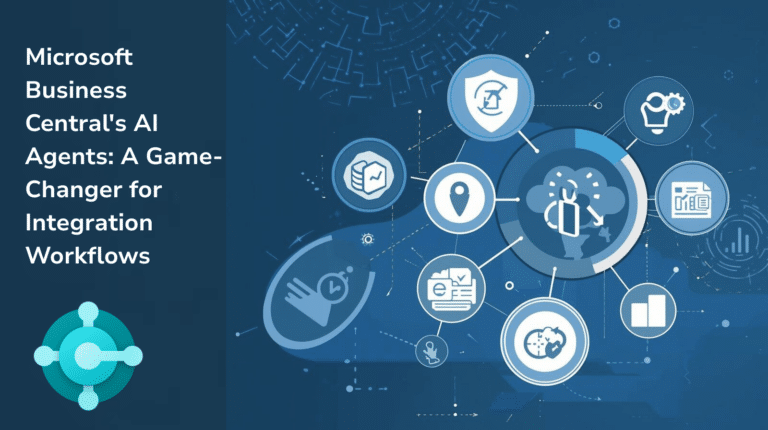Change is an integral part of any business’ growth journey. Managing that change effectively is the lifeblood of successful business leadership.
Shepherding your business through a digital transformation is no different. But in order to manage change, especially one as exhaustive as a digital transformation, you must have a handle on where you’re starting from. Change of this magnitude will redefine how your business operates, and how the people in and around your business operate. Not knowing exactly what those operations look like is a recipe for unforeseen disaster – exactly when it’s already too late to change your approach.
In our previous article, we explored the importance of people, both external stakeholders and team members, in buying into any extensive change in business operations. Around 70% of all digital transformation ventures fail to meet expectations, per a report by McKinsey. The inability of firms to get their teams and external stakeholders to buy into the changes being proposed is cited, time and time again, as the defining reason these attempts to effect massive change to a business fall flat.
But it is not the people in your business who will change as a result of the transformation you are proposing; It is the processes that bind them together and define their relationships.
Arming yourself with a thorough understanding of your business’ processes is integral to successful change management as you embark upon your program for digital transformation.
What are the Business Processes That Drive Digital Transformation?
A business process is a sequence of actions that achieve repeatable and reliable outcomes. A simple example would be a business’ method of logging sales leads on a piece of internal software, or how invoices are archived. These are steps that incoming staff can be trained on to ensure consistency of outcomes and stability moving forwards, even as a business goes through staff turnover.
Processes are the DNA that makes up your business – they are how you do what you do, the recipe behind your success and the engine that drives your profitability and growth. Understanding them inside and out, and how your digital transformation will change them for the better, is key to getting the most out of that transformation.
Ideally you want your plans for digital transformation to address processes in the following ways:
- How will this change produce an optimal result?
- Will it reduce costs?
- Does it amalgamate two or more different processes, to address redundancies and improve overall efficiency?
- How does the change intersect with the other two pillars of the PPT Framework: People, and Technology?
With a solid grasp on the processes that are crucial to your business operations, and how they will be revamped as a result of your digital transformation, you will be able to start preparing for the transition. It allows you to begin retraining and upskilling your team to navigate the new processes; inform external stakeholders of the coming changes; and knowing that the resources are in place to properly harness the updated processes.
What Business Processes are Crucial in Effective Digital Transformation
With so much to gain from correctly implementing digital transformation in how your business processes are built and operate, identifying the key processes to transform, and how digital transformation can impact them, is crucial.
Your processes define how your business runs, from selling to clients, to how it manages people internally. Some of the core processes that digital transformation can overhaul, thus improving the overall optimisation of your business, include:
- Customer Service
- A very common target for digitalisation, implementing automated customer satisfaction systems in your processes, such as offering customers feedback forms to fill out after availing of your services, can inform future changes to your business processes based on your customers’ self-identified needs. A robust CS process also ensures that your customers feel heard, and that they are dealing with people who care.
- Delivery and Inventory Management
- If your business deals in physical goods, then a unified and automated structure for tracking delivery progress and updating internal inventory rosters accordingly can save time and lessen the potential for error. This is a core part of any business operation, and getting this right pays dividends down the line, ensuring smoother day-to-day operations and cost-effective supply chains.
- Reporting
- Falling into a similar vein as above, how your employees report on activities influences how your organisation tracks KPIs, manages work hours, and monitors inventory levels. One Dublin-based supplier of boilers and pipes discovered how digitalising their field reports allowed for more consistent and on-time cash flow, as well as ensuring important data was all coralled in one convenient location
- Human Resource Management
- Of course, these processes can be internal as well as external or client-facing. Another example of how digital transformation can be harnessed to reimagine simple, everyday business processes is in HR, where simple setups such as digital time trackers and check-in systems can allow an employee’s work hours to be tracked at a glance, allowing for quick and seamless payroll accounting each month.
How Digital Transformation Can Impact Your Processes
Having identified the core processes at the heart of your digital transformation, what changes should you be expecting them to undergo, to deliver seismic and sustainable optimisation for your business?
The key to every facet of a digital overhaul is efficiency. Having identified and roadmapped your existing processes, it should be easier with your bird’s eye view of things to highlight key areas of overlap, redundancy or bottlenecks. These are all tangles and knots that a successful digital transformation will be able to massage out of your processes and systems.
So what is it we’re actually aiming to achieve?
We want to eradicate duplication – Processes which rely on pen-and-paper form-filling, as one example, tend to be susceptible to duplication of efforts as information is stored on one form and has to be copied to another, or input into a spreadsheet. A one-point system for recording that information, seamlessly uploading it to a cloud-based data capture software, cuts down on the time it takes to properly store the data in question, and limits the chance of human error as you boil away the multi-step process to a simple one-touch method.
An effective digital solution for data management also unlocks a level of control over your data you may not have previously been able to access on legacy systems. Collating data seamlessly from multiple sources, to display analytics and insights on one cohesive dashboard, can offer you a whole new way of looking at your business, and making informed strategic decisions.
For internal processes, streamlining everyday clerical work (like the aforementioned time-punch system that submits data directly to payroll) cuts down on time spent on reporting and increases convenience and quality of life for your team. Being able to track time spent on tasks with a touch of a button in the moment, rather than relying on estimates in retrospect at the end of a week or project, makes life easier for employees and ensures more accuracy in reporting data.
How Can a Business Prepare Itself for Digital Transformation?
If your business is preparing to undergo a digital transformation process, be sure you’re putting your best foot forwards by taking advantage of Target Integration’s free guide to digital transformation for SMEs. Downloading the guide also gives you access to our useful Digital Transformation Checklist, also completely free, to ensure that your business is covering all its bases before embarking upon its transformation.
Want to know more? Check out our blog covering everything SMEs need to know about digital transformation. If you represent a business preparing to take the first bold step on its digital transformation journey, book a consultation today and one of our team will be happy to talk to you about how digital transformation can unleash your business’ full potential!



